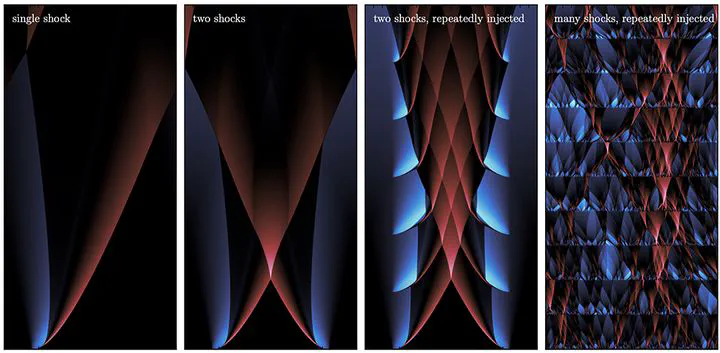The density distribution and physical origins of intermittency in supersonic, highly magnetized turbulence with diverse modes of driving
Dec 1, 2022· ,,,·
0 min read
,,,·
0 min read
James R. Beattie
Philip Mocz
Christoph Federrath
Ralf Klessen

Abstract
The probability density function (PDF) of the logarithmic density contrast, s = ln (ρ/ρ0), with gas density ρ and mean density ρ0, for hydrodynamical supersonic turbulence is well known to have significant non-Gaussian (intermittent) features that monotonically increase with the turbulent Mach number, M . By studying the mass- and volume-weighted s-PDF for an ensemble of 36 sub-to-trans-Alfv́enic mean-field, supersonic, isothermal turbulence simulations with different modes of driving, relevant to molecular gas in the cool interstellar medium, we show that a more intricate picture emerges for the non-Gaussian nature of s. Using four independent measures of the non-Gaussian components, we find hydrodynamical-like structure in the highly magnetized plasma for M≲4 . However, for M≳4 , the non-Gaussian signatures disappear, leaving approximately Gaussian s-statistics - exactly the opposite of hydrodynamical turbulence in the high- M limit. We also find that the non-Gaussian components of the PDF increase monotonically with more compressive driving modes. To understand the M≲4 non-Gaussian features, we use one-dimensional pencil beams to explore the dynamics along and across the large-scale magnetic field, B0 . We discuss kinetic, density, and magnetic field fluctuations from the pencil beams, and identify physical sources of non-Gaussian components to the PDF as single, strong shocks coupled to fast magnetosonic compressions that form along B0 . We discuss the Gaussianization of the M≳4 s-fields through the lens of two phenomenologies – the self-similarity of the s-field and homogenization of the dynamical time-scales between the over- and underdense regions in the compressible gas.
Type